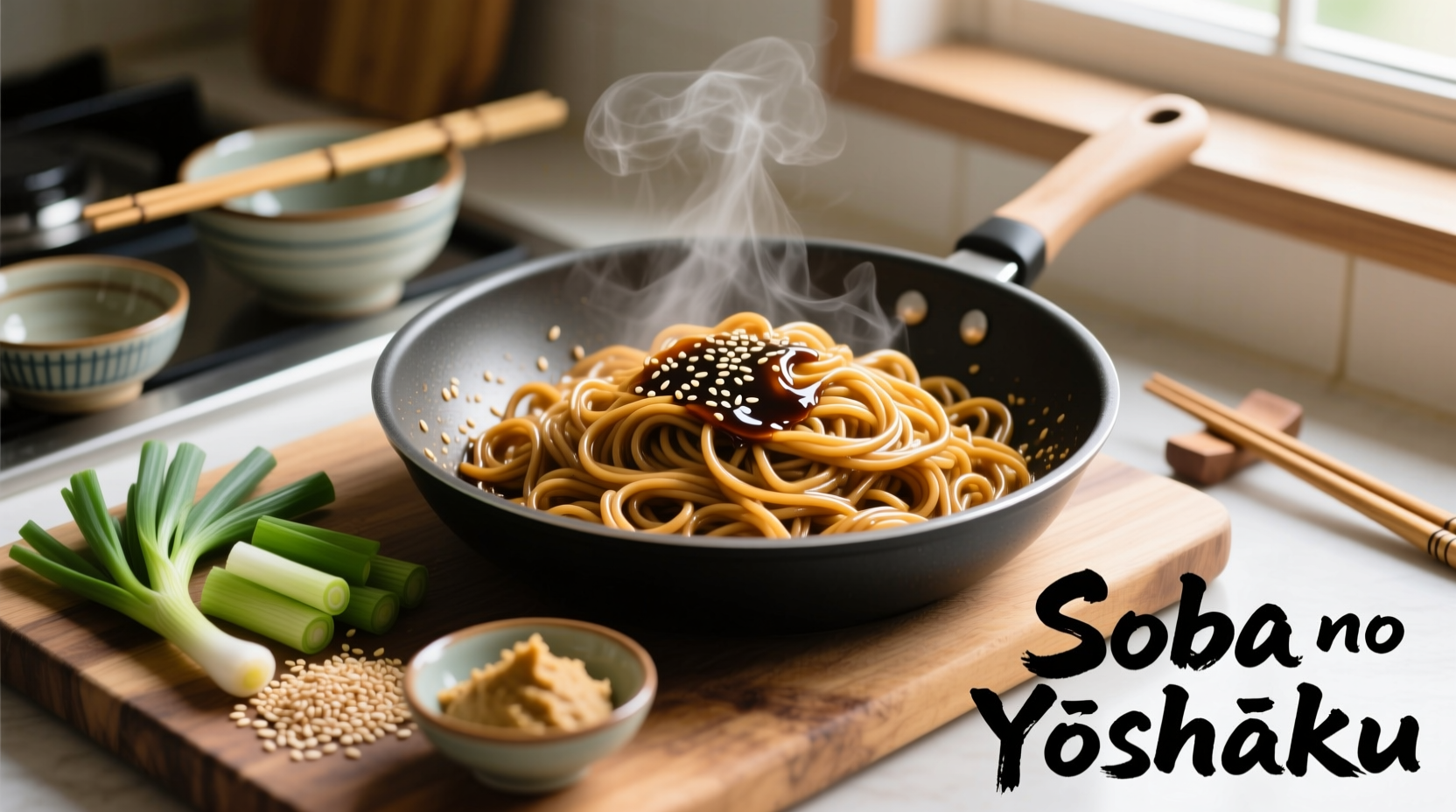To cook perfect soba noodles, boil 4-7 minutes in ample water (1 liter per 100g noodles), stir occasionally, then immediately rinse under cold running water until completely cooled. For chilled soba, plunge in ice water; for hot soba, skip ice bath. Proper rinsing removes excess starch preventing stickiness and ensures ideal chewy texture.
Master Soba Noodle Cooking: From Package to Plate
Cooking soba noodles seems simple, but achieving that perfect chewy-yet-tender texture requires precise technique. Many home cooks end up with mushy or sticky noodles because they miss critical steps in the process. This guide reveals exactly how to cook soba noodles properly every time, whether you're preparing chilled zaru soba for summer or comforting hot kake soba for winter.Understanding Soba Noodle Varieties
Not all soba noodles cook the same. The buckwheat-to-wheat ratio significantly impacts cooking time and technique:| Buckwheat Content | Texture Profile | Recommended Cooking Time | Best Serving Style |
|---|---|---|---|
| 100% buckwheat (jūwari) | Fragile, earthy flavor | 4-5 minutes | Cold dishes only |
| 80% buckwheat | Balanced texture | 5-6 minutes | Both hot and cold |
| 40-60% buckwheat | More resilient | 6-7 minutes | Hot broths preferred |
Essential Equipment Checklist
Before you start cooking, gather these tools:- Large pot (at least 4 quarts for 2 servings)
- Fine-mesh strainer
- Bowl of ice water (for chilled soba)
- Timer (critical for perfect texture)
- Wooden spoon or chopsticks for gentle stirring
The Step-by-Step Cooking Process
Water Preparation: The Foundation of Perfect Soba
Use a generous water-to-noodle ratio—10 parts water to 1 part noodles by weight. For 200g of dried soba, use 2 liters of water. Add 1 tablespoon of salt per liter once the water reaches a rolling boil. Contrary to pasta cooking, salt primarily enhances flavor rather than preventing sticking.Boiling Technique: Timing is Everything
When water boils vigorously:- Add noodles gradually while stirring gently with chopsticks
- Bring back to boil, then reduce heat to maintain gentle simmer
- Set timer based on buckwheat content (see reference table)
- Stir gently every 2 minutes to prevent clumping
Testing for Doneness: The Professional Method
Two minutes before expected finish time:- Fish out one noodle with chopsticks
- Rinse briefly under cold water
- Bite test: Should offer slight resistance (al dente)
- Perfect noodles bend without breaking when lifted
The Critical Rinsing Process: Where Most Home Cooks Fail
 This step determines your noodle's final texture:
This step determines your noodle's final texture:
For Chilled Soba (Zaru Soba)
- Immediately transfer boiled noodles to colander
- Rinse under cold running water for 30 seconds
- Plunge into ice water bath for 1-2 minutes
- Swirl gently to remove surface starch
- Drain thoroughly and fan vigorously to dry surface
For Hot Soba (Kake Soba)
- Rinse under warm (not cold) water for 15 seconds
- Shake gently in colander to remove excess water
- Return to empty pot for 10 seconds over low heat
- Add directly to hot broth
Serving Styles and Pairings
Dipping Sauce Mastery
For chilled soba, prepare tsuyu dipping sauce:- Mix 3 parts dashi broth, 2 parts soy sauce, 2 parts mirin
- Simmer 5 minutes, then cool completely
- Serve with wasabi and scallions on the side
Hot Broth Preparation
For hot soba:- Use concentrated mentsuyu base diluted with hot water
- Maintain broth temperature at 70-75°C (158-167°F)
- Add noodles just before serving to prevent overcooking
Common Mistakes to Avoid
The Overcooking Trap
Soba noodles cook quickly—just 30 seconds past ideal timing turns them mushy. Always test 1 minute before package instructions indicate.Insufficient Rinsing
Surface starch causes noodles to clump together. Professional chefs recommend rinsing until water runs completely clear, which typically takes 45-60 seconds under running water.Improper Storage of Cooked Noodles
Never leave cooked soba sitting in water. Drain completely and, if not serving immediately, toss with a teaspoon of toasted sesame oil to prevent sticking. Store no longer than 2 hours before serving.Advanced Techniques from Tokyo Chefs
Water Quality Matters
Tokyo's tap water (slightly alkaline) produces better texture than soft water. If your water is soft, add 1/8 teaspoon baking soda per liter to mimic Tokyo's mineral profile.The Double-Boil Method
For restaurant-quality texture:- Boil noodles for 2 minutes in small pot
- Transfer to fresh boiling water for remaining time











 浙公网安备
33010002000092号
浙公网安备
33010002000092号 浙B2-20120091-4
浙B2-20120091-4